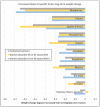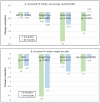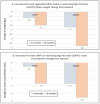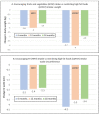A Comprehensive Critical Assessment of Increased Fruit and Vegetable Intake on Weight Loss in Women
- PMID: 32610460
- PMCID: PMC7399879
- DOI: 10.3390/nu12071919
A Comprehensive Critical Assessment of Increased Fruit and Vegetable Intake on Weight Loss in Women
Abstract
No previous reviews or meta-analyses have specifically assessed the effects of increased fruit and vegetable (FV) intake on weight loss with a primary focus on women. Several studies show differences between men and women in how increased FV intake affects their weight loss and maintenance, risk of becoming overweight or obese, and the influence of eating speed and frequency on weight control. This analysis provides a comprehensive and visual assessment of the effects of increasing FV intake and long-term weight change from observational studies and weight loss from randomized controlled trials (RCTs) in women. Consistent evidence from prospective studies and RCTs shows that increased intake of FV is a chief contributor to weight loss in women. This effect is enhanced with concurrent dietary restriction of high energy density (ED) or high-fat foods. Yet, the type of FV differentially impacts weight loss in women. Whole FV intake may influence weight through a variety of mechanisms including a reduction in eating rate, providing a satisfying, very-low to low energy density, low glycemic load or low-fat content. Also, FV are the primary source of dietary fiber, which can provide additional support for weight loss in women when consumed at adequate levels.
Keywords: adiposity; body mass index; energy density; fruit; glycemic load; legumes; prospective cohort studies; randomized controlled trials; vegetables; waist circumference; weight; women.
Conflict of interest statement
M.L.D. is an ad hoc nutrition research consultant, and N.A.F. is the Senior Director of Nutrition for the Hass Avocado Board.
Figures






























References
-
- US Department of Health and Human Services and U.S. Department of Agriculture 2015–2020 Dietary Guidelines for Americans. 8th Edition. December 2015. [(accessed on 31 May 2020)]; Available online: https://health.gov/dietaryguidelines/2015/guidelines/
Publication types
MeSH terms
LinkOut - more resources
Full Text Sources
Medical

